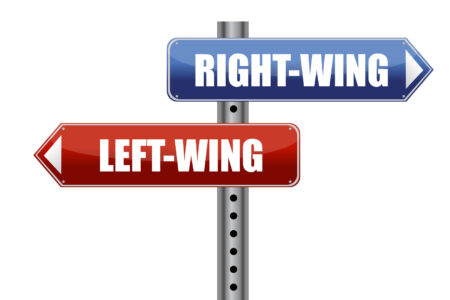
Jonathan Haidt has exposed a truth most people have known all along: conservatives don’t get liberals and liberals don’t get conservatives.
These differences are not because liberals are smart and conservatives are dumb, as liberals would have us believe. Nor are they because liberals have no moral code by which they govern their lives, as conservatives would testify.
Instead these polar opposites are constructed on a base of moral values that create a framework for voting preferences. Haidt has opened the door to show us how people on the right-left continuum make decisions, which makes The Righteous Mind a must-read for all political professionals.
Few politicians can count on winning elections by appealing only to those who agree with them. Putting together enough votes to win requires wooing at least some people beyond their base to come aboard, and that’s why Haidt’s explanation of how people make their political choices is so vital.
We all claim that we cast our vote based on a rational decision-making process. But Haidt summons clinical evidence from his field of moral psychology to show that, in fact, we make snap political judgments that are far from rational.
Haidt recounts a study by Princeton University psychologist Alex Todorov that shows how these intuitive responses can dictate how we vote. Todorov displayed photos of winners and runners-up in elections to a group of subjects. The photos were shown for only one tenth of second, after which the volunteers were asked to judge which candidate was most competent.
Two-thirds chose the winner of the election.
In one-tenth of a second, we reach a conclusion of who is most competent solely based on a photo. And we wonder why campaigns are so focused on creating the perfect photo-op for our candidates?
This is central to Haidt’s thesis that “intuitions come first, strategic reasoning second.” We make up our minds, then find the justification to support our conclusions.
Politics is increasingly about trying to set the terms by which people make that quick judgment.
Most political professionals know this already, which is why so little of modern campaigns are aimed at trying to change voters’ minds. A big swath of the electorate has already decided what or who they like, and have come up with arguments to justify it and defend it against all attacks. Their beliefs become ingrained, pretty much impervious to the best arguments or advertising to dispel them.
Haidt relates these preconceived conclusions as akin to being a rider on an elephant. The elephant is our unconscious, impulsive self, the rider not really in control of where the elephant is going. When our base instincts lead us to a decision, the rider, our conscious minds, leans with the elephant. That lean is our rationale, our justification for moving where our elephant is taking us.
Of course if riders never changed their minds there would be no voter swings. Politics would be static, and governments would seldom change. We know that’s not true, because there is a subset of voters susceptible to being wooed. To use Haidt’s paradigm of the elephant, these are the riders still standing beside their elephant, waiting to get on.
In politics, we see three groups of people on any issue: the hyper-engaged, the less engaged and the unengaged. Two of these are unappealing to the political pro. The hyper-engaged are on their elephants. They have well-formed opinions and will use post-hoc justifications to defend their position.
These are our core constituencies, unlikely to shift allegiance.
The unengaged are unaware there is even an elephant in the room. These voters have decided they do not care about the issue or the election, and are highly unlikely to participate in debates or even vote. So we ignore them. If you never vote, you have no voice. So we have stopped listening.
Most of the action is aimed at the less engaged. The key is to reach this group before opinions are formed — before they get on that elephant. Politics is increasingly about trying to set the terms by which they make that quick judgment.
Here, the secret to winning is to craft the terms of the debate around the broad set of values by which individuals make decisions.
Too many political professionals try to frame the debate on their own value sets, which usually fall on the conventional “left/right” political continuum.
The right presents their argument as an almost religious commitment to ideals such as low taxes, less government and social conservative principles. The left are equally committed to questions that support public health, public education and societal good.
Both of these traditional frames are too broad, says Haidt. Instead, we are motivated by innate values that are largely shared across society. Loosely summarized:
We look for leadership. We seek fairness, though not equality. We strive to live in a noble way, even if we don’t always succeed. We oppose doing harm. We believe in justice and oppose oppression.
Haidt argues conservatives seek political leadership that addresses all of these moral frames. Conservative voters have created complex fabric of morality to balance six moral constructs with equal weight. Liberals, by contrast, value their moral frames differently. Caring and fairness have a higher value for liberal voters. Liberty is a moral that is valued by both liberals and conservatives, yet for entirely different reasons. Liberals value liberty of oppressed groups while conservatives value liberty of the individual.
Haidt’s theory of voters driven by moral values offers political advisers and campaign managers the route to a more targeted politics, allowing them to tailor their candidate’s or party’s message to specific subgroups.
This politics of micro-targeting, as it is known, works. For almost a decade, politics in the United States has been focused on the acquisition and analysis of more and more data about voters. The more the pros know about you, the easier it is to craft questions for you that drive your voter choice to their candidate.
Canadian politics lags behind our American counterparts, but we are starting to see a shift toward micro-targeting, particularly by the Conservative Party of Canada. Success is dictated by presenting a powerful story to voters in a fashion to move their individual elephant.
The Naheed Nenshi campaign was designed to move the voters of Calgary using simple messaging appealing to core values of voters. Messages were crafted on a variety of issues (14 in all) and then targeted to specific voter groups based on algorithms regarding voter receptiveness to individual messages.
In addition, Nenshi’s central story was that he was a kid who grew up in Marlborough (a lower-income area of Calgary), rode public transit to his public school and studied at the public library.
Regardless of how you personally identify within Haidt’s moral themes, you can find values you agree with within that story. His story signals to our less engaged voters to get up on their elephant. It gets the voters on their elephant, and the messaging pushes their intuitive buttons telling the elephant the direction to lean.
This is campaigning. This is how to win.
Photo: Shutterstock by SFIO CRACHO







